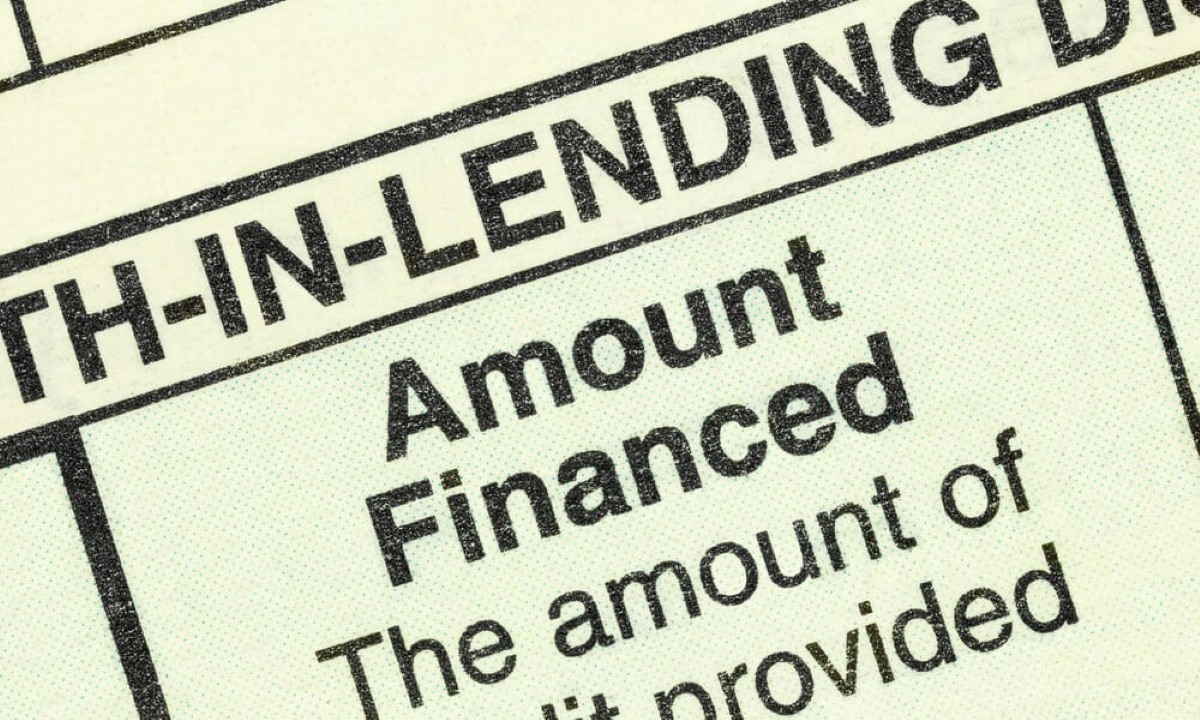

Finance
What Is The TILA Grace Period?
Published: February 21, 2024
Learn about the TILA grace period and how it impacts your finances. Understand the implications of TILA on your financial obligations.
(Many of the links in this article redirect to a specific reviewed product. Your purchase of these products through affiliate links helps to generate commission for LiveWell, at no extra cost. Learn more)
Table of Contents
Introduction
Welcome to the world of finance, where understanding the intricacies of financial regulations can significantly impact your financial well-being. One such regulation that plays a crucial role in protecting consumers is the Truth in Lending Act (TILA). This legislation, enacted to promote the informed use of consumer credit, ensures that borrowers receive key information about the cost of their credit transactions. Among the various provisions of TILA, the grace period stands out as a vital aspect that directly impacts borrowers' financial management.
In this comprehensive guide, we will delve into the nuances of the TILA grace period, shedding light on its significance and how it affects borrowers. Whether you're a seasoned financial aficionado or a newcomer to the world of credit, understanding the TILA grace period is essential for making informed decisions and effectively managing your finances.
So, let's embark on this enlightening journey to unravel the intricacies of the TILA grace period and equip ourselves with the knowledge to navigate the world of consumer credit with confidence and clarity.
Understanding TILA
Before delving into the specifics of the TILA grace period, it’s essential to grasp the overarching framework of the Truth in Lending Act. Enacted in 1968, TILA is a federal law designed to protect consumers in their dealings with lenders and creditors. The primary objective of TILA is to promote the informed and responsible use of consumer credit by requiring clear disclosure of key terms and costs associated with credit transactions.
Under TILA, creditors are mandated to provide borrowers with transparent and meaningful information about the terms of credit offered, enabling consumers to compare various credit options and make well-informed decisions. This includes disclosing the annual percentage rate (APR), total costs of borrowing, and other essential details that empower borrowers to assess the implications of entering into a credit agreement.
Moreover, TILA encompasses a wide range of credit products, including credit cards, mortgages, auto loans, and other forms of consumer credit. By standardizing the disclosure requirements across different credit instruments, TILA ensures that consumers have access to consistent and comprehensible information, fostering a more transparent and equitable credit market.
Furthermore, TILA grants consumers the right to rescind certain types of credit transactions, such as home equity loans and refinancing, within a specified period, adding an extra layer of protection against potentially unfavorable credit arrangements. This provision empowers borrowers to reconsider their decisions and, if necessary, retract from credit agreements without incurring financial penalties.
Overall, TILA serves as a vital safeguard for consumers, promoting fairness, transparency, and informed decision-making in the realm of consumer credit. With a solid understanding of TILA’s fundamental principles, we can now explore a specific aspect of this legislation that directly impacts borrowers: the TILA grace period.
TILA Grace Period Explained
Among the key provisions of the Truth in Lending Act (TILA) is the concept of a grace period, which holds significant relevance for borrowers managing their credit obligations. The TILA grace period refers to a specified period after the due date of a credit card or loan payment during which the borrower can make the payment without incurring late fees or facing adverse consequences, such as negative impacts on credit scores. This grace period, typically ranging from 21 to 25 days, serves as a valuable buffer for borrowers, offering them the flexibility to manage their payments without immediate financial repercussions.
It’s important to note that the availability and duration of the TILA grace period can vary depending on the specific terms outlined in the credit agreement. While federal law does not mandate a universal grace period for all credit products, many creditors choose to provide this benefit to their customers as a goodwill gesture and a competitive advantage. As a result, consumers are encouraged to carefully review the terms and conditions of their credit agreements to understand the specifics of the grace period applicable to their accounts.
Additionally, the TILA grace period applies specifically to new purchases and does not extend to cash advances or balance transfers, which may start accruing interest immediately without a grace period. Borrowers should be mindful of these distinctions to effectively manage their credit utilization and minimize interest expenses.
Understanding the nuances of the TILA grace period empowers borrowers to navigate their credit responsibilities with greater confidence and financial prudence. By leveraging the grace period effectively, borrowers can optimize their cash flow, align their payment schedules with their income cycles, and avoid unnecessary financial strain caused by late payment penalties.
Moreover, the TILA grace period underscores the consumer-centric ethos embedded in TILA, emphasizing the importance of fair and transparent credit practices that prioritize the well-being of borrowers. By affording borrowers a reasonable window to fulfill their payment obligations without punitive consequences, the TILA grace period exemplifies the legislative intent of promoting responsible credit usage while safeguarding consumers from undue financial burdens.
Importance of TILA Grace Period
The TILA grace period holds immense significance for borrowers, serving as a valuable tool for managing their credit obligations and maintaining financial stability. Understanding the importance of the TILA grace period can empower consumers to make informed decisions and leverage this benefit to their advantage.
1. Financial Flexibility: The TILA grace period provides borrowers with a crucial window of financial flexibility, allowing them to align their payment schedules with their cash flow. This flexibility is particularly beneficial for individuals and families managing varying income cycles, enabling them to time their payments strategically without incurring late fees or penalties.
2. Mitigating Financial Strain: By offering a buffer period after the payment due date, the TILA grace period helps mitigate potential financial strain caused by unforeseen circumstances or temporary cash flow challenges. Borrowers can navigate unexpected expenses or income disruptions without facing immediate repercussions, thereby fostering greater financial resilience.
3. Promoting Responsible Credit Management: The TILA grace period encourages responsible credit management by providing borrowers with the opportunity to fulfill their payment obligations without incurring adverse consequences. This promotes a culture of financial prudence and accountability, aligning with the overarching objectives of TILA to empower consumers in their credit dealings.
4. Consumer Protection: The TILA grace period serves as a form of consumer protection, ensuring that borrowers are not unduly penalized for minor delays in making their credit card or loan payments. This safeguard is particularly valuable for individuals navigating complex financial commitments, offering them a degree of leniency within the credit framework.
5. Strategic Debt Repayment: For borrowers aiming to manage and reduce their debt effectively, the TILA grace period can be leveraged strategically to optimize their repayment strategies. By capitalizing on the grace period, borrowers can allocate their funds efficiently, prioritizing high-interest debts and maximizing the impact of their payments.
By recognizing the importance of the TILA grace period, borrowers can harness this benefit as a tool for financial empowerment and prudent credit management. Whether it’s seizing the opportunity to reallocate funds for strategic debt reduction or navigating temporary financial challenges without incurring penalties, the TILA grace period stands as a pivotal component of consumer-friendly credit practices, aligning with the core principles of TILA.
Conclusion
In conclusion, the TILA grace period represents a fundamental aspect of consumer credit protection, embodying the ethos of transparency, fairness, and responsible credit management advocated by the Truth in Lending Act. By providing borrowers with a window of financial flexibility and leniency after the payment due date, the TILA grace period empowers individuals and families to navigate their credit obligations with greater confidence and control.
Throughout this exploration, we’ve gained a comprehensive understanding of TILA and the pivotal role played by the grace period in safeguarding consumers’ financial well-being. From its function as a tool for mitigating financial strain to its role in promoting responsible credit management, the TILA grace period stands as a testament to the consumer-centric principles enshrined in TILA.
As consumers, it’s imperative to leverage our knowledge of the TILA grace period to make informed decisions, optimize our payment strategies, and effectively manage our credit responsibilities. By staying attuned to the specifics of the grace period outlined in our credit agreements, we can harness this benefit to our advantage, steering clear of unnecessary penalties and aligning our payments with our financial circumstances.
Ultimately, the TILA grace period serves as a beacon of consumer protection within the intricate landscape of consumer credit, offering a vital respite for borrowers facing the ebb and flow of financial demands. By recognizing its importance and embracing its potential, we can navigate the realm of credit with resilience, prudence, and a firm grasp of our financial well-being.
As we continue on our financial journeys, let’s carry forth this understanding of the TILA grace period as a tool for empowerment, enabling us to tread the path of credit management with clarity, confidence, and informed decision-making.














